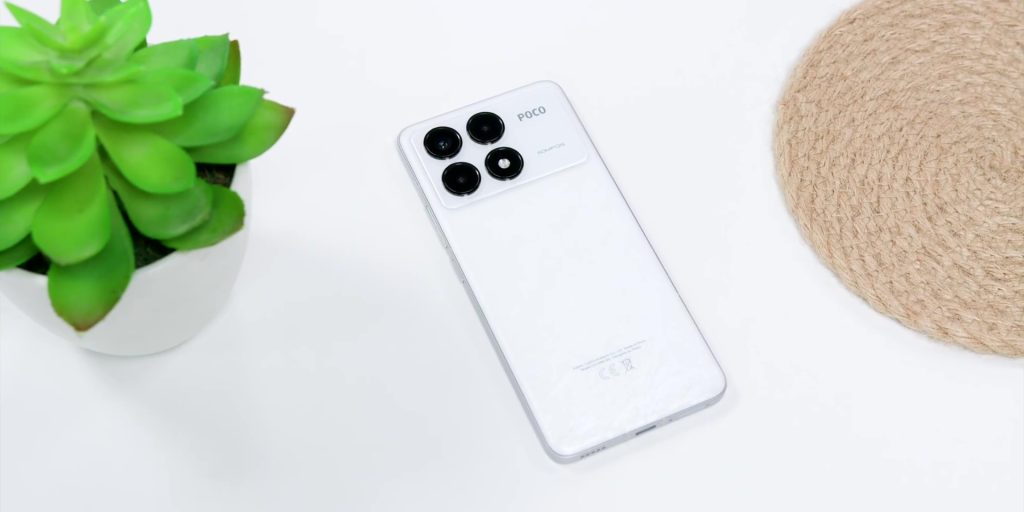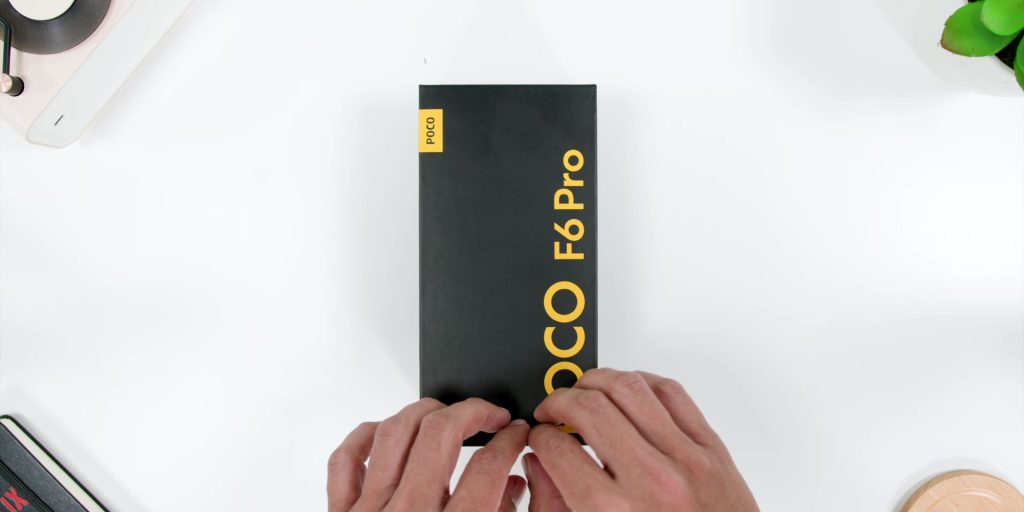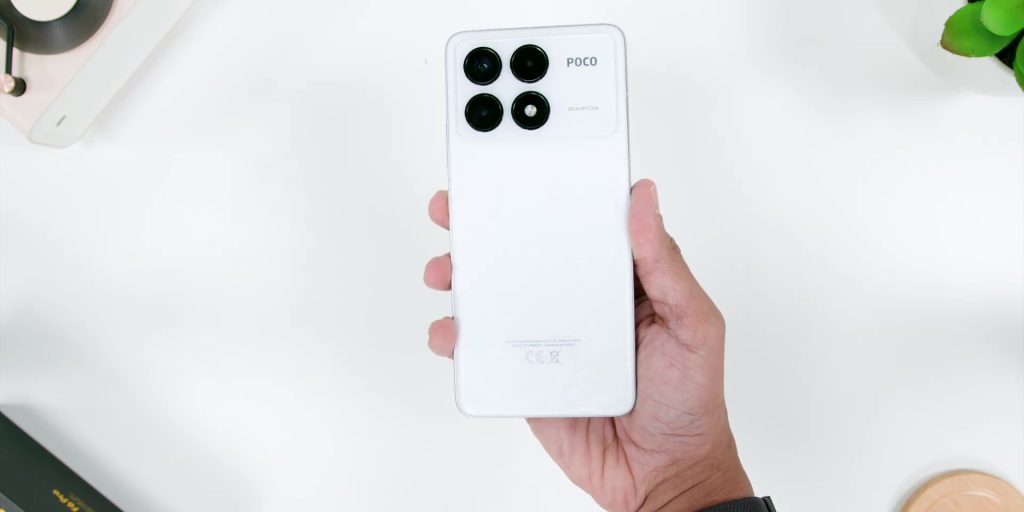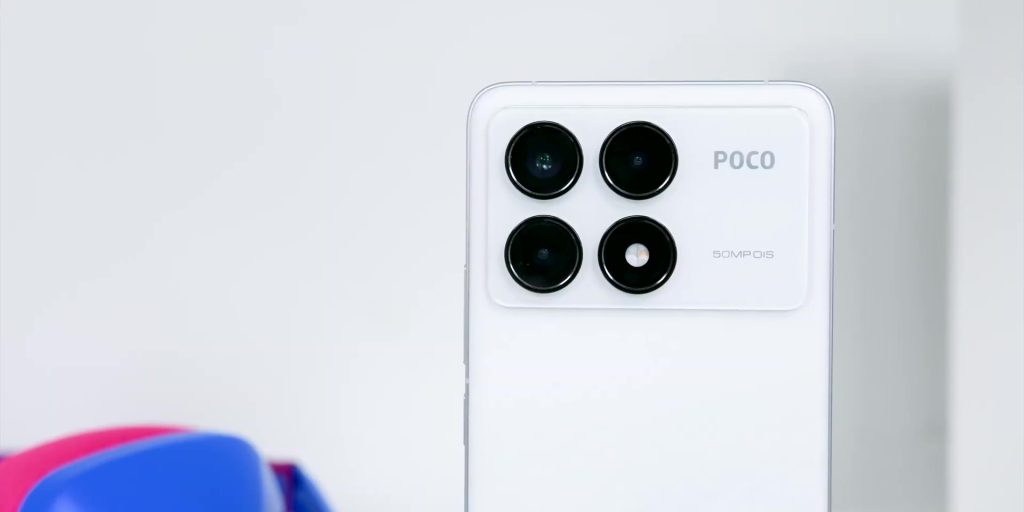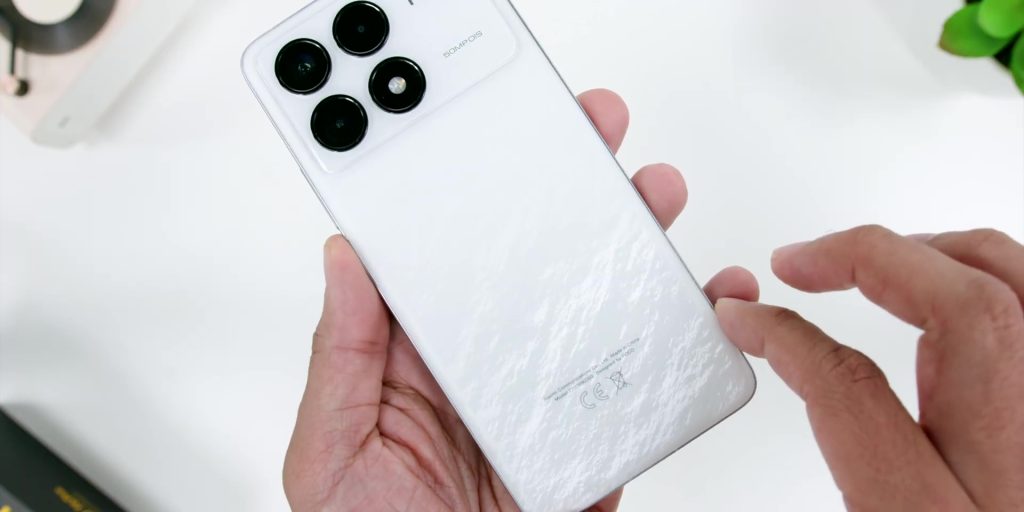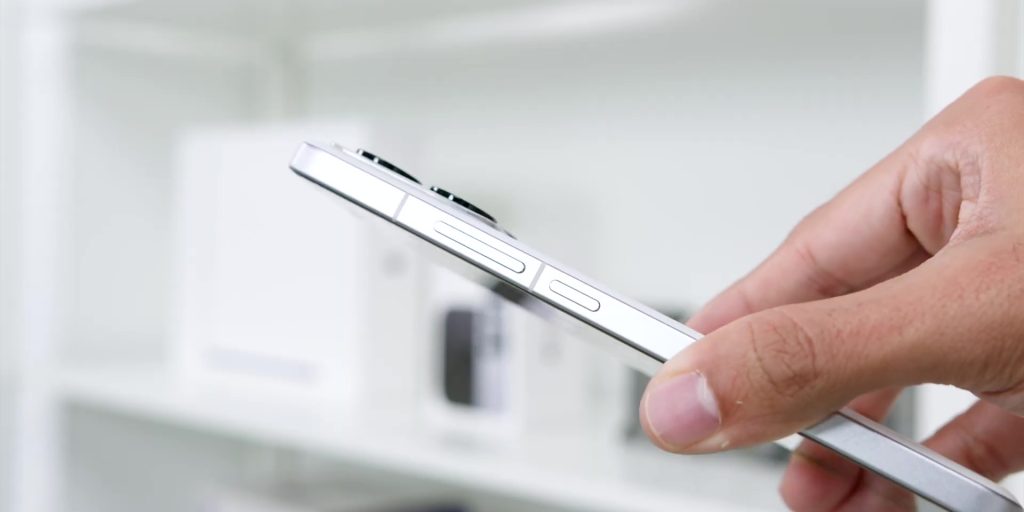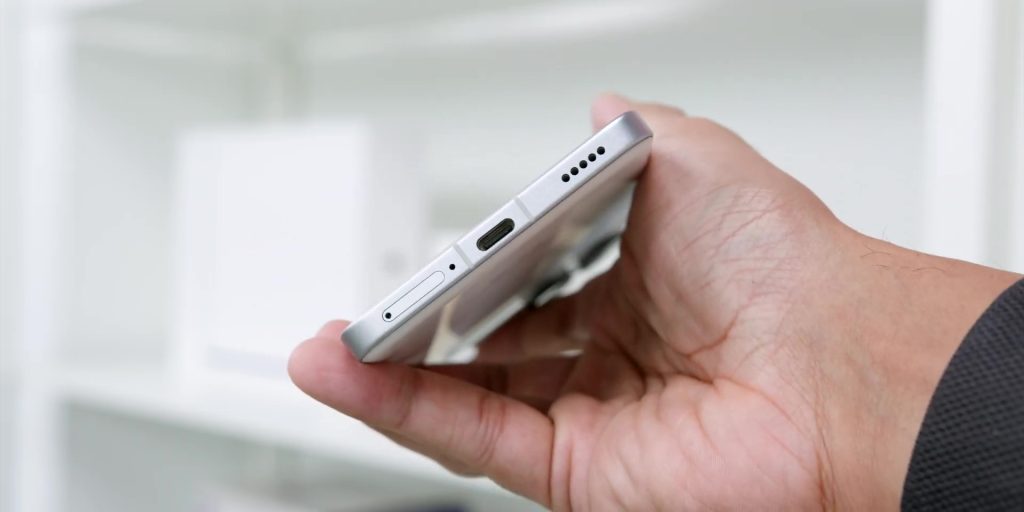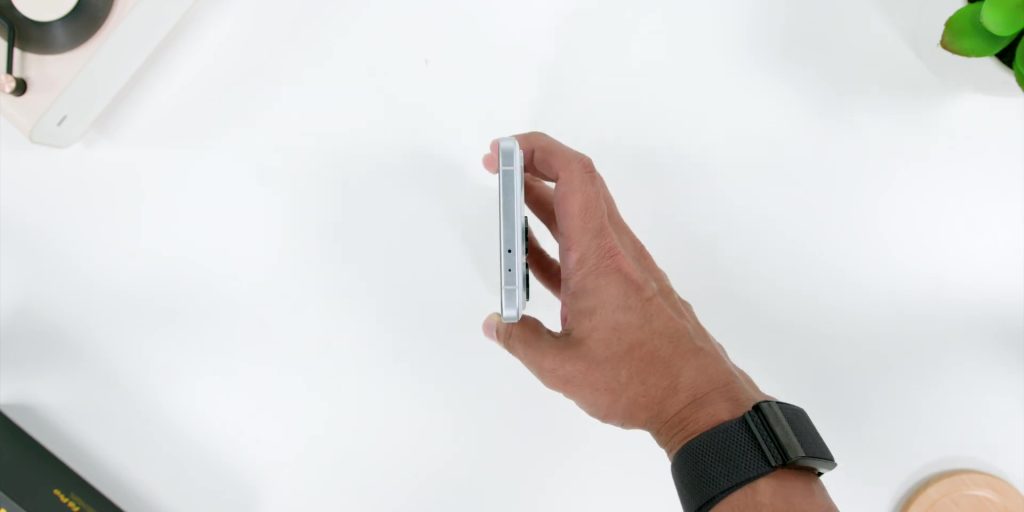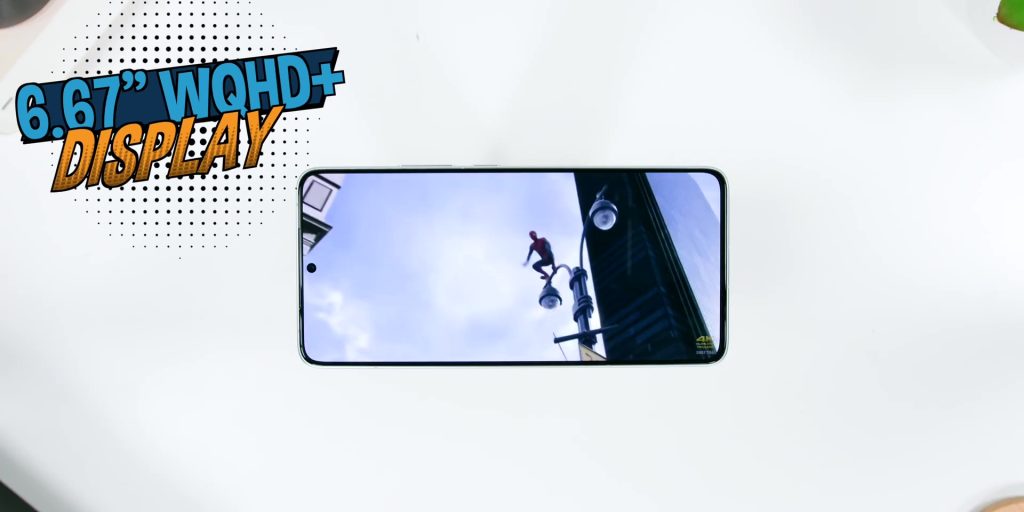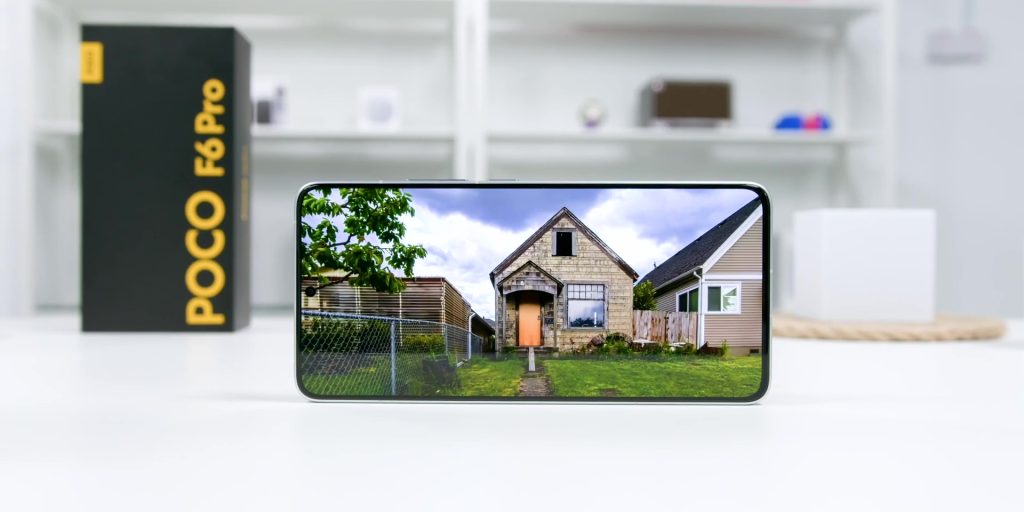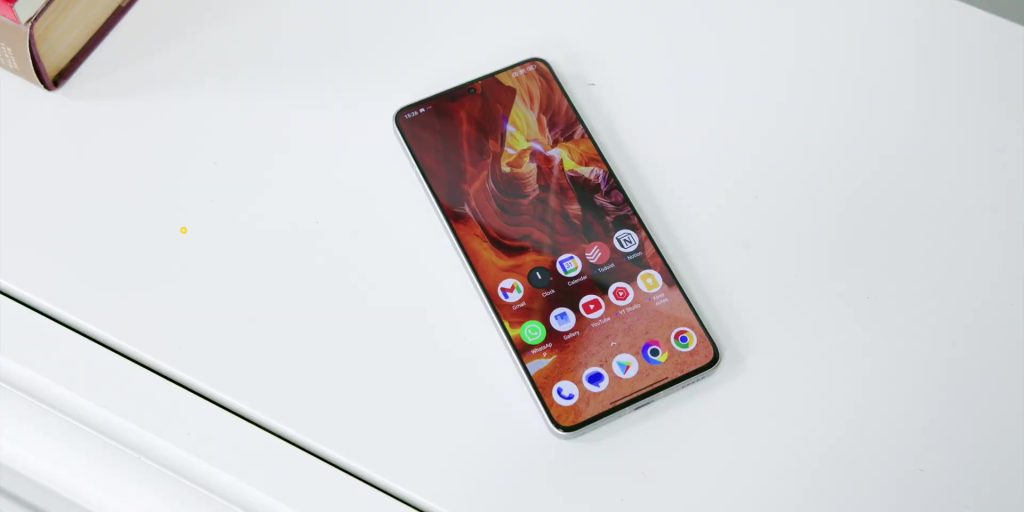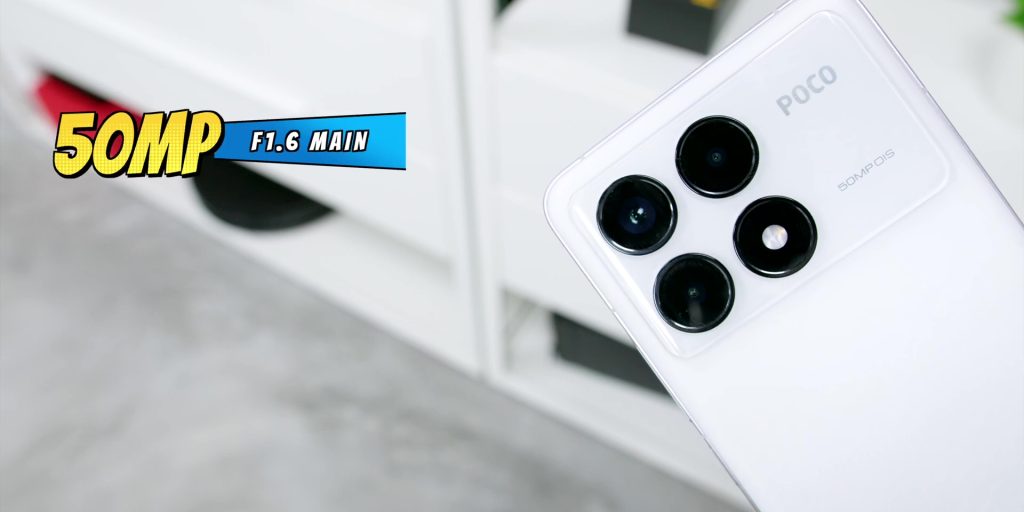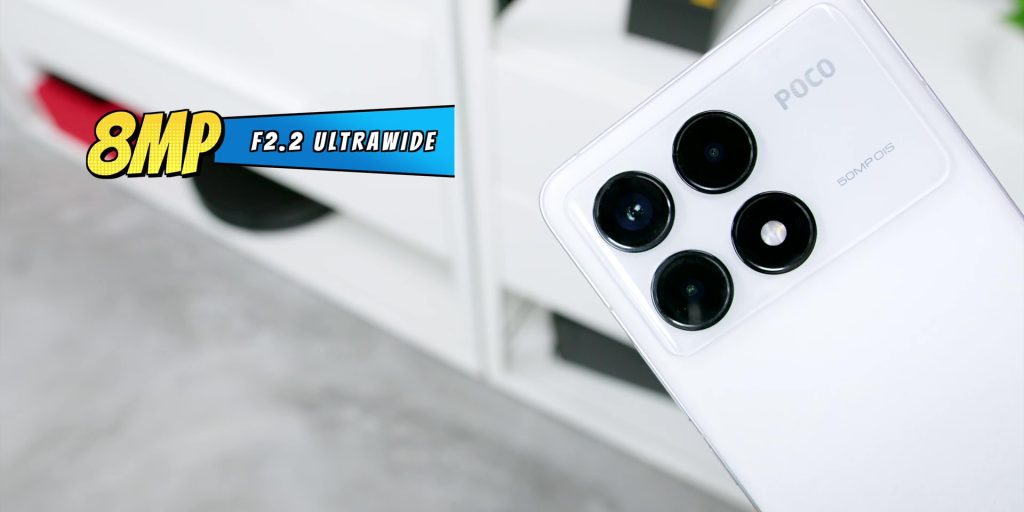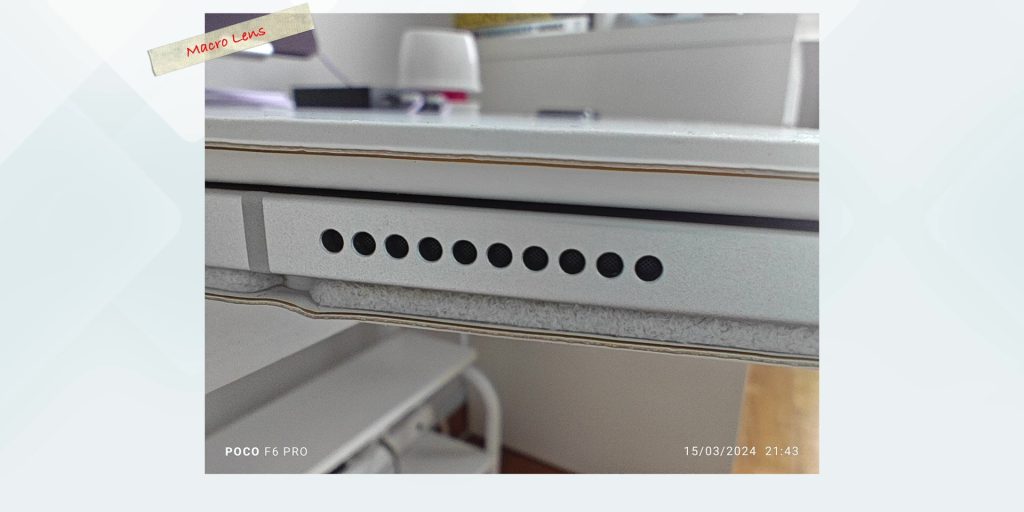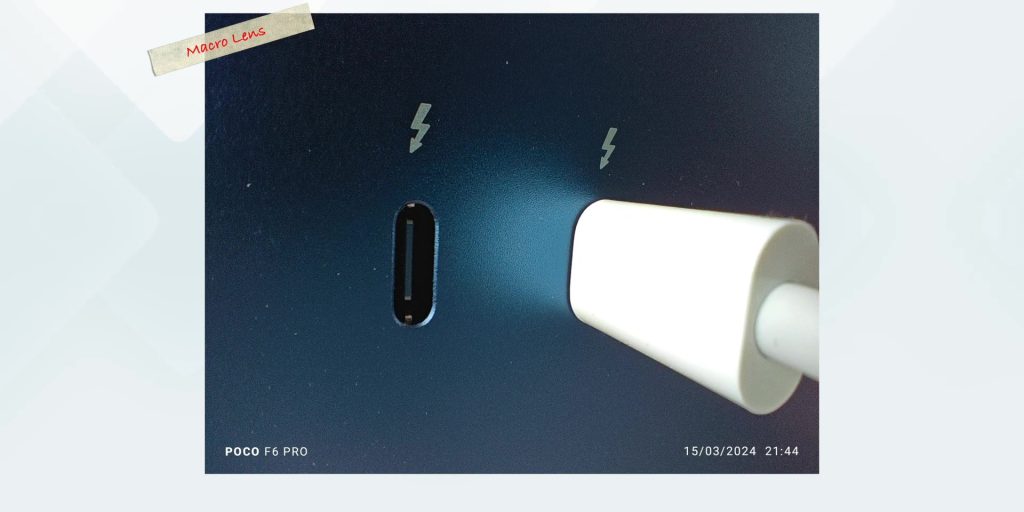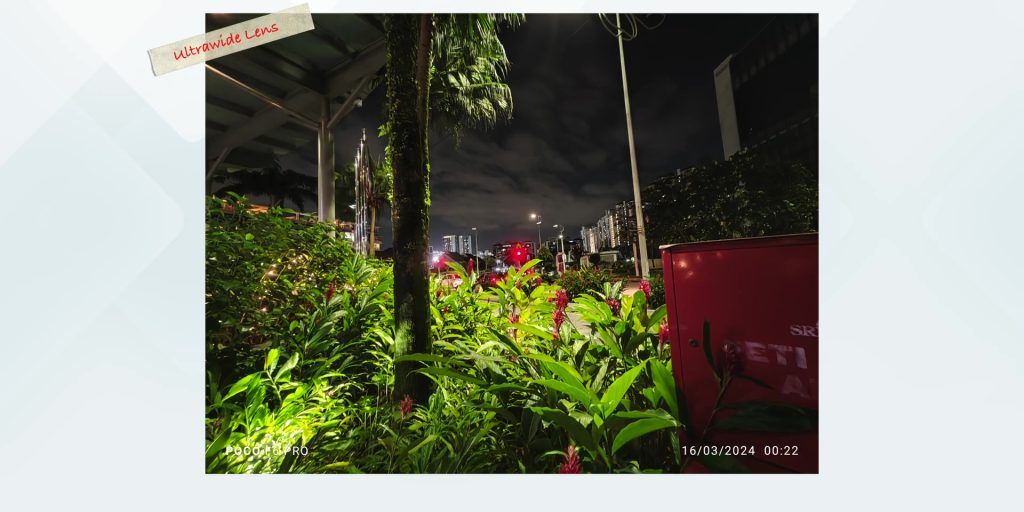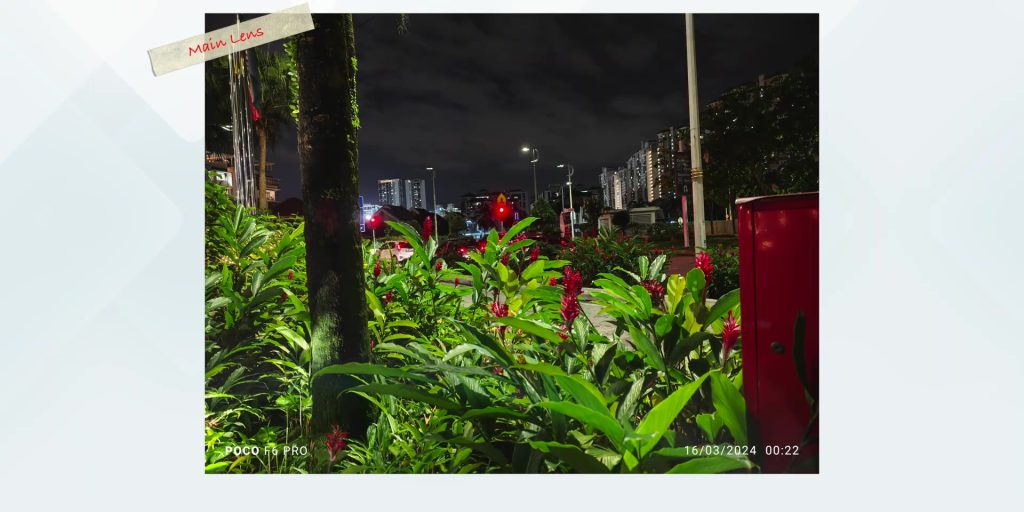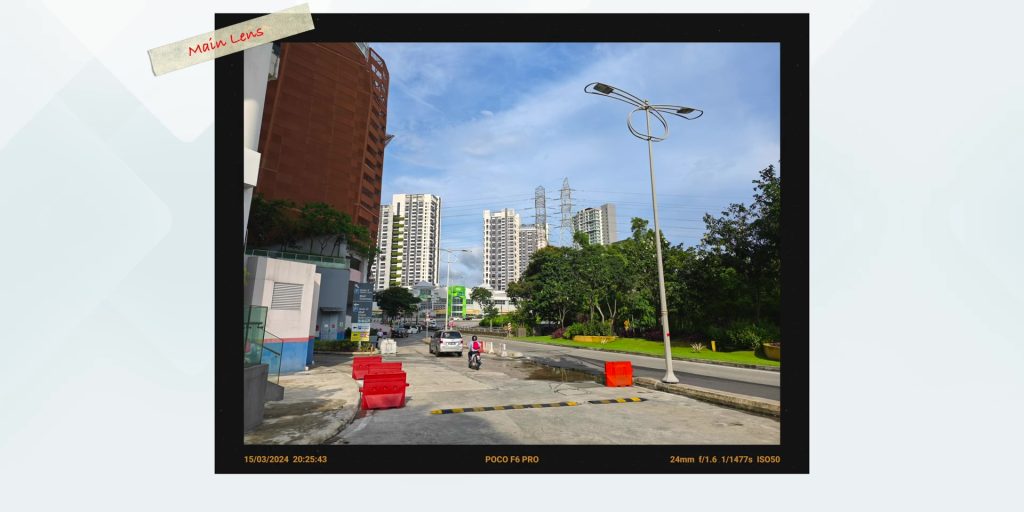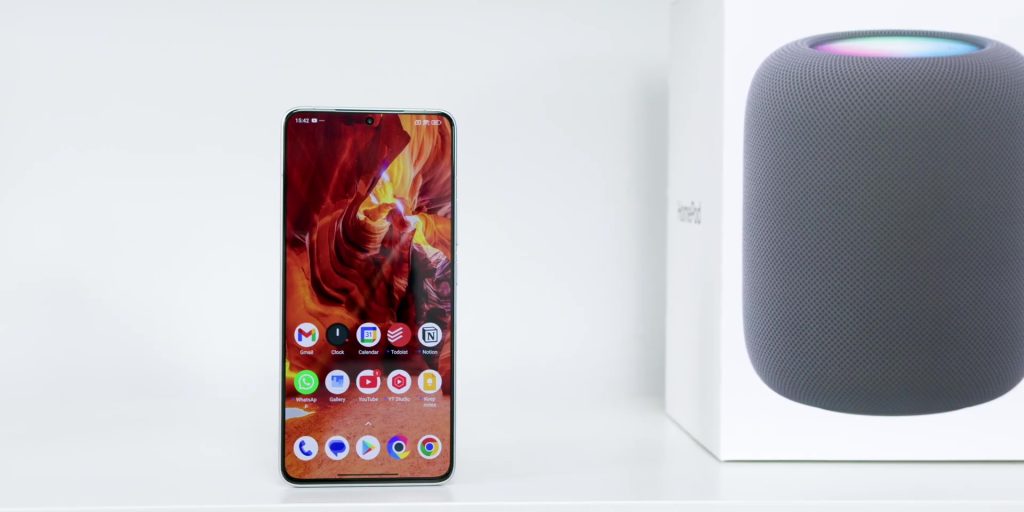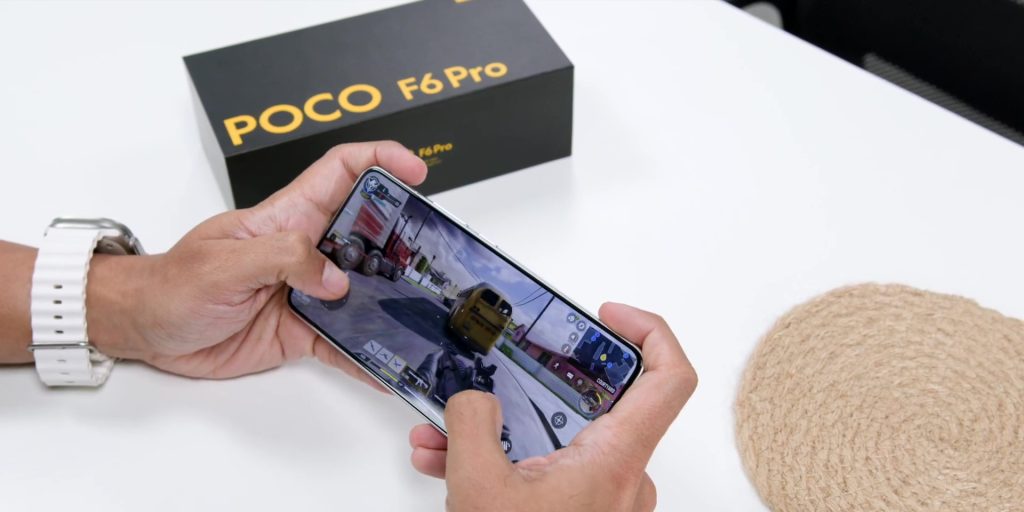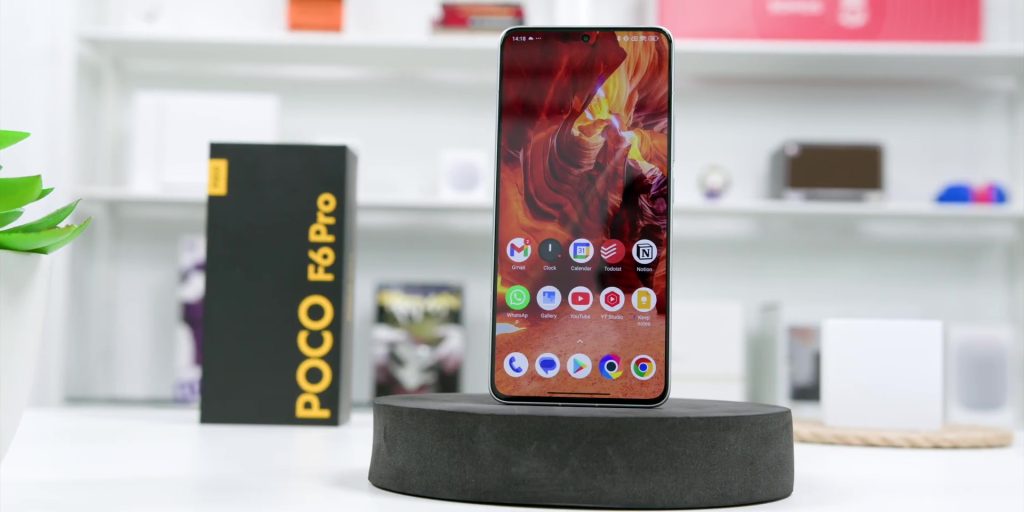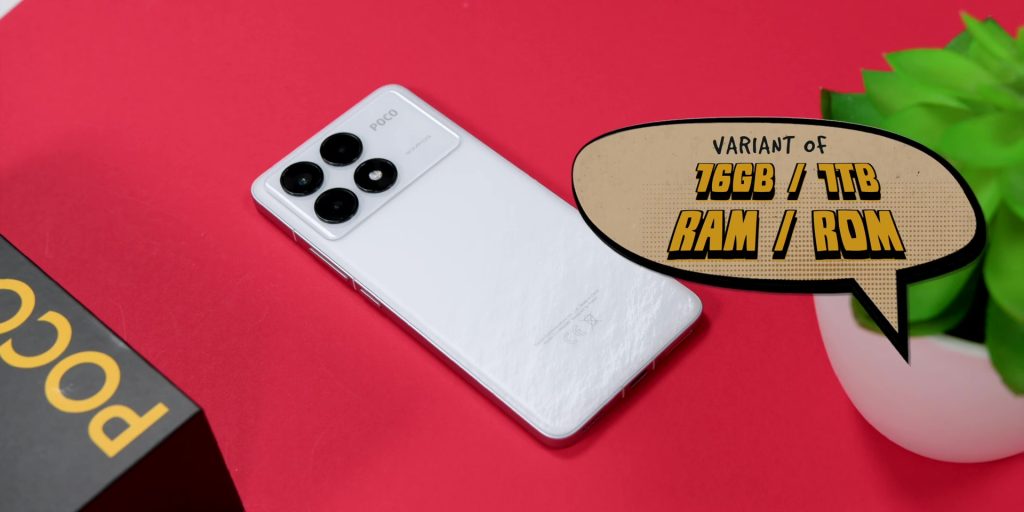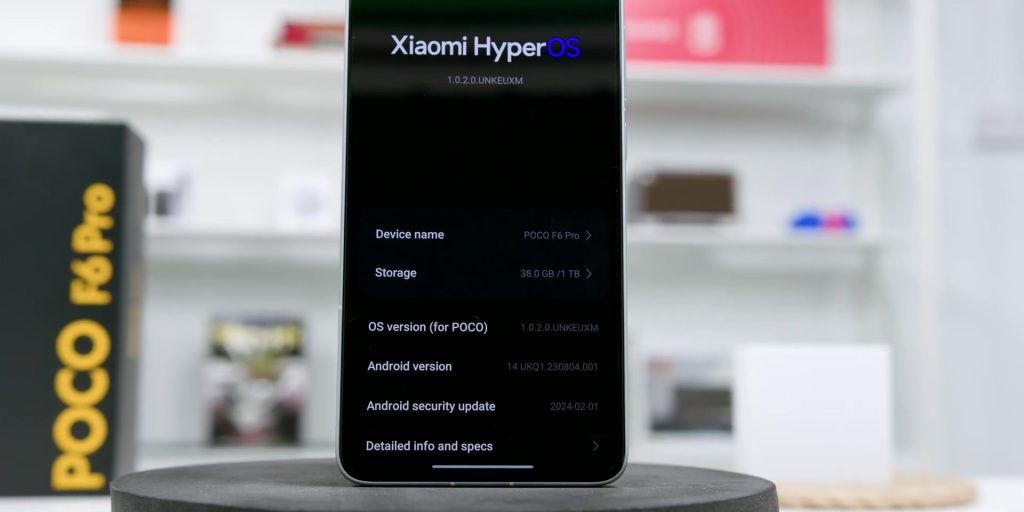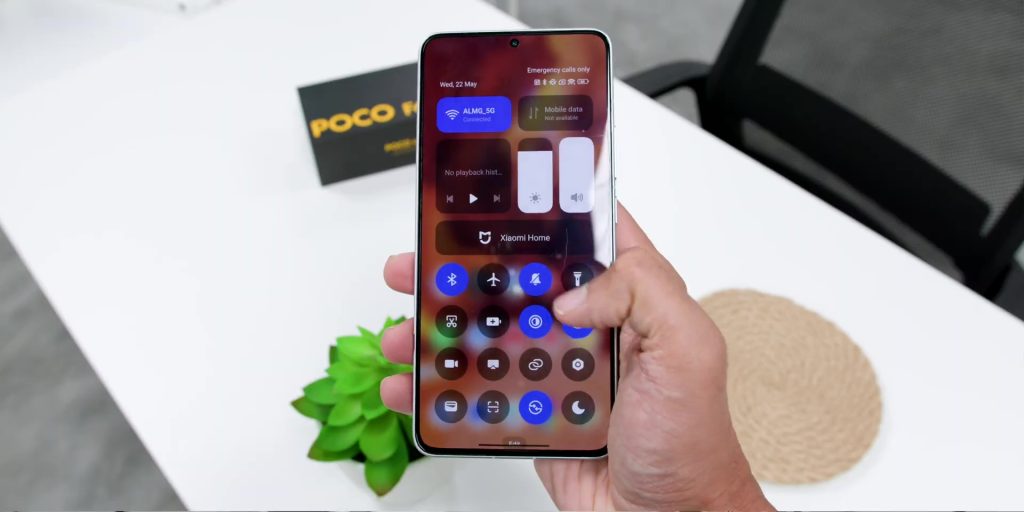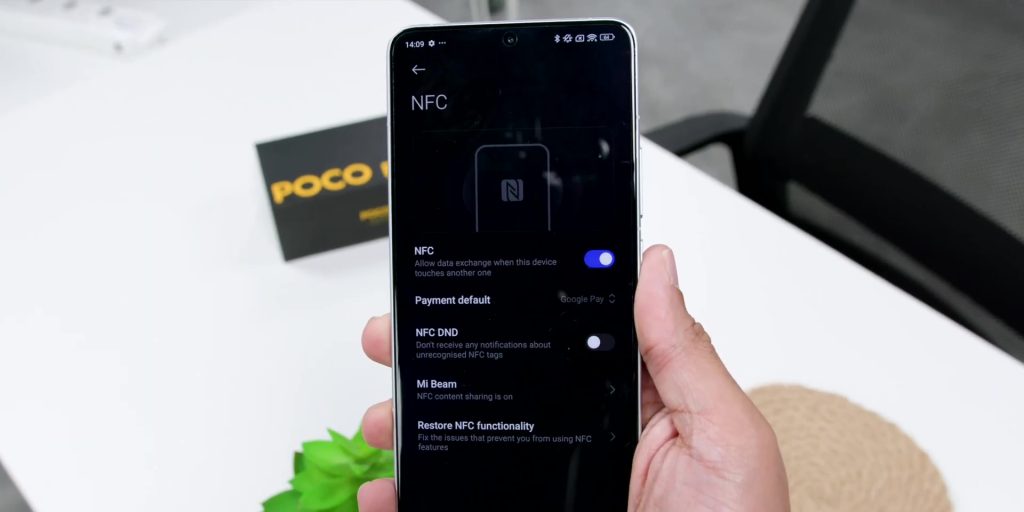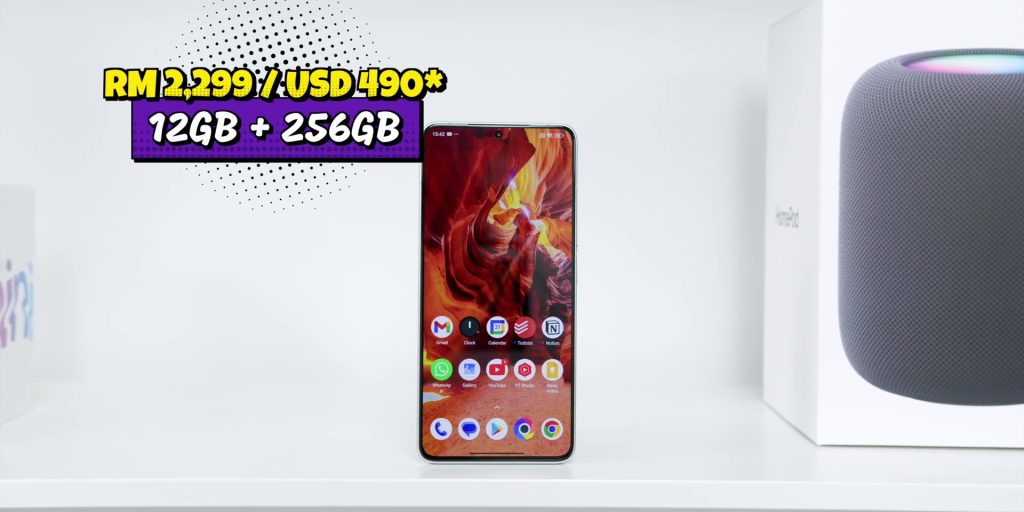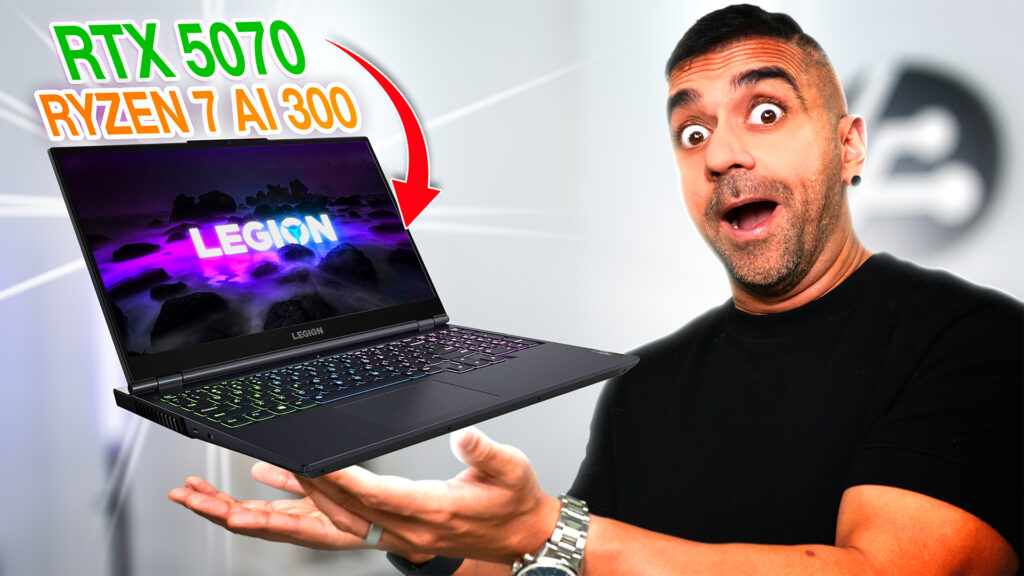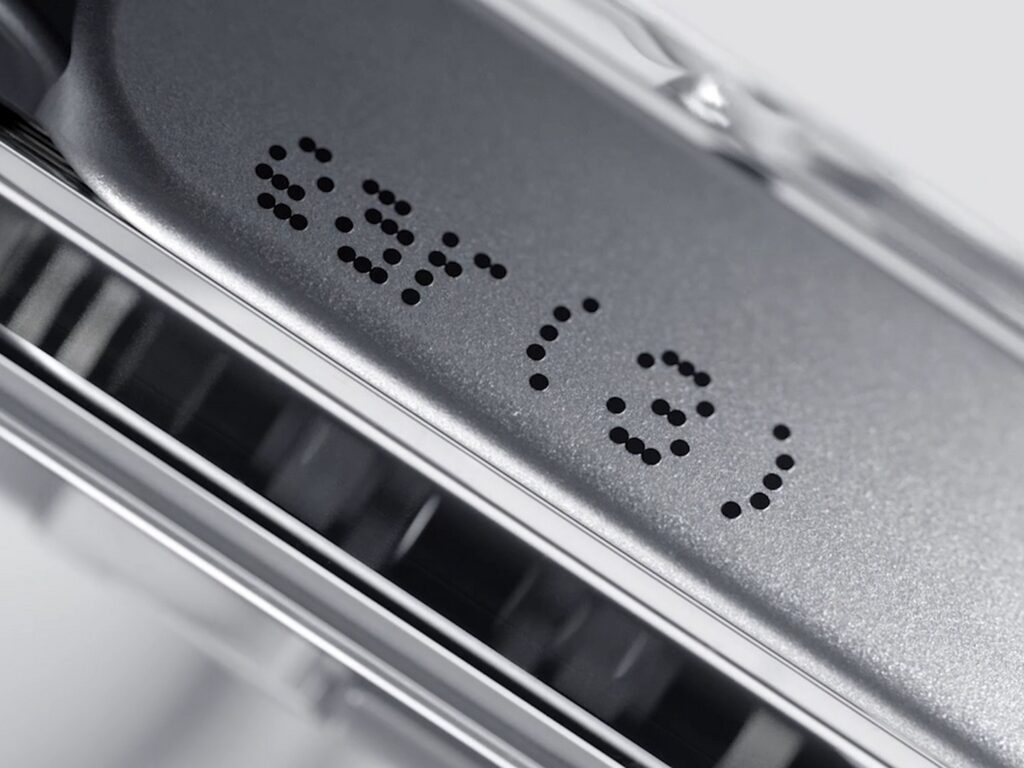This is the global variant of the POCO F6 Pro, a phone that will make you wonder – what’s happening?
Unboxing
Starting with the unboxing, the box comes in POCO’s signature black and yellow box.
Then, the box includes:
- a SIM ejector pin,
- the paperwork
- a really nice black TPU soft case
- a USB-A to USB-C cable
- and a massive 120W HyperCharge charger
[easy-image-collage id=20186]
Again, kudos to POCO for including a charger when many other brands are excluding it these days.
Design
So, the phone’s design was “new” for the F series but familiar from a POCO brand point of view. The arrangement at the back reminded me of how the M series was, with the POCO branding at the back.
Now, this is fine but I am not a huge fan, because I still stand firm on preferring the type of camera array that the POCO F3 had, but if I had to choose between this camera array and how it looks compared to the previous POCO F5 Pro, I would go with this ONLY because it doesn’t wobble when you are typing on a surface.
It has a matte finish at the back, so there are no fingerprints, and it feels nice to the touch with an almost marble-like texture, reminding me of HUAWEI’s Rococo Pearl on the P60 Pro, but this looks a bit more low-profile, which I prefer this too.
Speaking of the finishes, yes because it is in white, so you can bet that I absolutely love this white color finish, especially with its overall look of the phone too, where I felt that not only is it better than the previous smartphones from POCO, and for me, it’s even nicer than the POCO F3 in white too.
Then the sides are high-grade aluminum, with all of the button placements on the right, where the dual SIM card slot is at the bottom and the IR blaster is on top.
Display
Even before looking at the phone’s display, I knew that it would look good, just like the previous F series.
The phone has a 6.67-inch Flow AMOLED DotDisplay with a resolution of 3200 x 1440 pixels and up to 120Hz refresh rate.
So this not only gives you an amazing viewing experience when it comes to video consumption but also makes it amazing for daily use because of its high 2160Hz touch sampling rate, and of course, for gaming as well.
But what’s new is the phone’s screen brightness because it has jumped from 1400 nits of peak brightness on the POCO F5 Pro to freaking 4000 nits of brightness!
And yes, during my first impressions, when I tested the phone, there were no issues at all when I was taking photos or just using the phone in a very harsh and bright daylight. Even with four lights in the studio, it is still not at the maximum brightness levels.
Cameras
As for the phone’s cameras, the phone comes with a 50MP f/1.6 aperture camera with OIS.
So, this is a reduction compared to the previous 64MP camera on the POCO F5 Pro, but it has a high dynamic range Light Fusion 800 image sensor, which apparently gives superior details and richer colors when taking photos.
Then, completing this triple camera setup is an 8MP ultra-wide camera with an aperture value of f/2.2 and a 2MP macro camera.
And yes, you all know how I feel about a macro lens, right? I was never a fan before and I’m still not a fan. But this dedicated lens, when it comes to the photos, the results were better compared to the Macro modes on the recently reviewed OnePlus 12R.
And by the way, the POCO F6 has no macro cameras – yeap, gone! Two cameras instead of three – what’s happening?
So, during my first impressions of taking photos on the phone, the pictures during the day looked amazing, even on a cloudy day, no thanks to Malaysia’s rainy season.
But while we all know that smartphones these days always perform very well during the day, I really wanted to see how these lenses perform at night.
And here are some quick shots taken, and I have to say that FINALLY, POCO has nailed their nighttime photos and videos. This could be because of its new sensor and POCO’s Ultra Night Algorithm, where even the front 16MP camera looked great at night.
And speaking of this front camera, the regular POCO F6 has a higher 20MP front camera instead – what’s happening?
As for video, there’s no 4K recording for the front camera on this, but like the previous F5 Pro, it can record up to 8K but only at 24 frames per second with HDR turned off.
[Sample video footages available in my YouTube video]
Oh, and one thing to note which made me a little annoyed was the watermark feature. But firstly, I loved how the watermark function had a film frame, which looked good.
But there were two annoyances. First, the film frame watermark is only for the main photo mode, so if you switch to the portrait mode, you won’t get that exact watermark look.
And the second thing that really annoyed me was that each section in the camera app had a toggle for the watermark function. I mean, why don’t you have a universal way to toggle everything?
Specs
Next, let’s talk about the internals. It comes with the Snapdragon 8 Gen 2 chipset. And yes, while that is the last year’s generation SOC, but based on my test on other devices on that chip, and even on this phone, it did perform well even with games like COD Mobile and even Genshin Impact.
More on my gaming test results when I use the phone more, so stay tuned for my conclusion on that, especially with this new LiquidCool Technology 4.0, that will apparently give peak performance for extended gaming sessions and also heavy demanding tasks, so let’s see about that.
Then the POCO F6 Pro has no official IP rating compared to the POCO F6 which comes with IP64 splashproof, so… what’s happening?
And the regular POCO F6 has Corning Gorilla Glass Victus and no mention about the type of protection or the glass protection that the POCO F6 Pro has, so… what’s happening?
Then for you spec nerd out there, it comes with 16GB of RAM and a massive 1TB storage option, the first for a POCO series.
As for the battery, not sure what is happening but it has reduced its capacity to 5000mAh instead of a 5160mAh battery compared to the previous generation POCO F5 Pro, but this could be due to its higher charging capabilities of 120W.
But what’s even weirder is that this POCO F6 and the POCO F6 Pro have no wireless charging, compared to last year’s generation POCO F5 Pro, so… what’s happening?
And stay tuned for my usual screen on-time test when I use the phone daily.
Then, running the software side of things, it is using Xiaomi’s HyperOS out of the box, which is at version 1.0.2.0, so you can expect things to run faster and smoother compared to MIUI this time around.
Speaking of speed, POCO says that it has an upgraded WildBoost Optimisation 3.0 which takes things a step further. This is because apparently, this is the technology that helps with the overall wait time for loading apps and games and the overall performance of this phone.
Now, connectivity-wise, the phone comes in Bluetooth 5.3 compared to version 5.4 on the non-Pro, so… what’s happening?
But there is Wi-Fi 7, which is great for future-proofing the phone. It also supports NFC, which means you won’t have any issues with using Google Pay or any other NFC-enabled features with this phone.
Then let’s talk about price, the POCO F6 Pro starts with the price of only RM2,299 which is about USD490 for the 12GB + 256GB variant. There is also a 512GB variant and also a 1TB storage option too, which is what I’m using right now.
🛒 POCO F6 Pro Malaysia Pricing:
POCO F6 Pro:
12GB+256GB – RM2,299 (Early Bird Offer RM2,059)
12GB+512GB – RM2,499 (Early Bird Offer RM2,159)
16GB+1TB – RM2,899 (Early Bird Offer RM2,599)
> Shopee (MY) – https://invl.io/cll621k
> Lazada (MY) – https://invol.co/cll621m
POCO F6:
8GB+256GB – RM1,799 (Early Bird Offer RM1,559)
12GB+512GB – RM1,999 (Early Bird Offer RM1,699)
> Shopee (MY) – https://invl.io/cll621q

